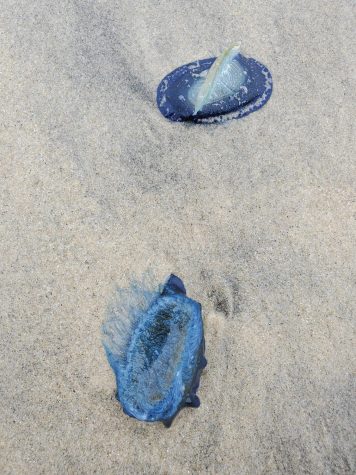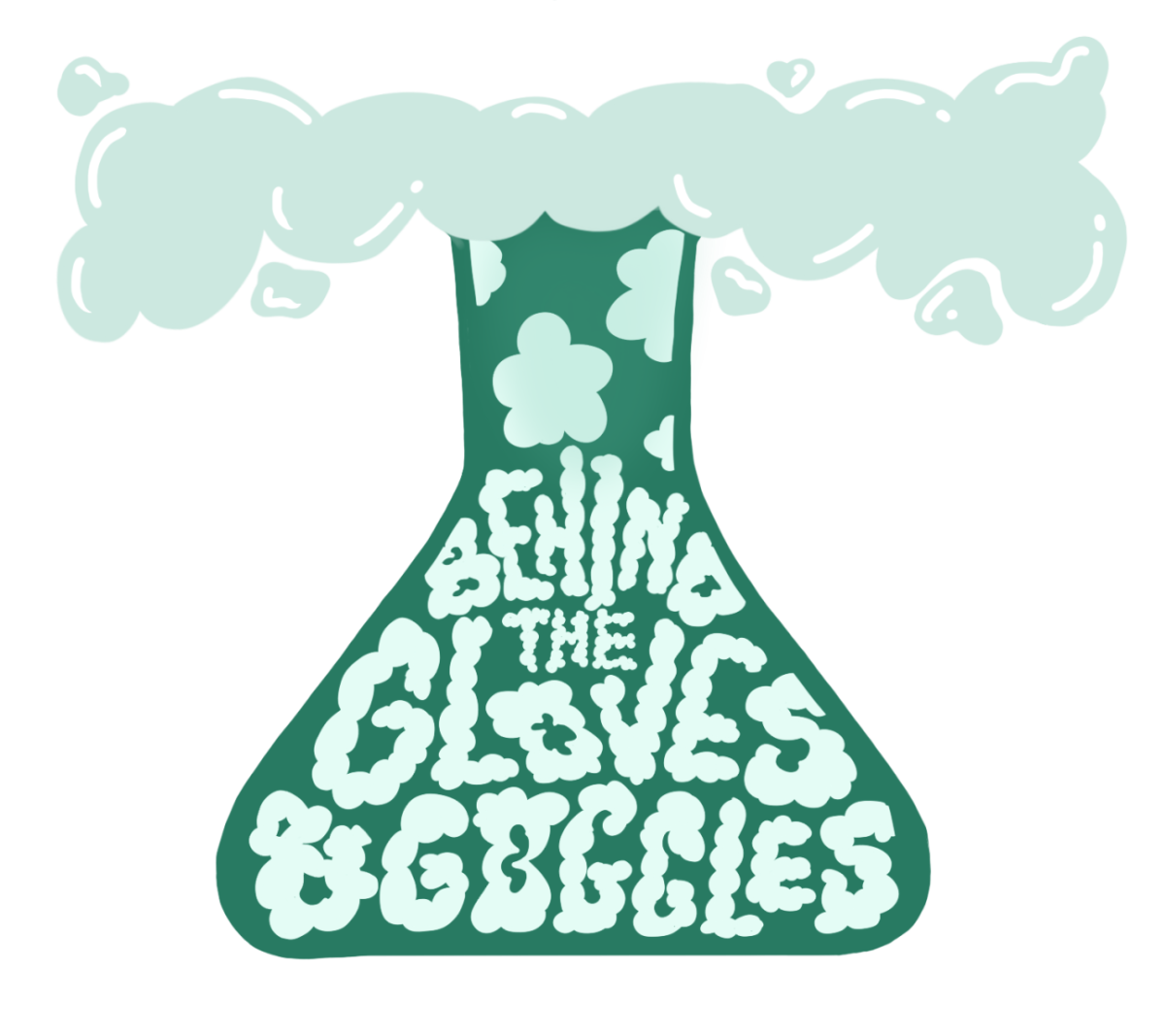Over the month of April, Carlsbad, Torrey Pines and other Southern California beaches have had a seemingly new visitor: shiny blue blobs. These blobs are identified as a type of hydra similar to jellyfish by their brilliant color and transparent sail.
Some, like Chuck Carroll, believed the small creatures were rocks from afar.
“We spotted what appeared to be small dark oval rocks looking like they washed up with the tide,” Carroll said.
Courtney Goode, the marine biology teacher at Sage Creek High School, explains the real reason behind this appearance.
“It’s called a hydra,” the marine biologist explains. “It’s related to a Portuguese man-o-war, which is similar to a jellyfish. So it’s in the same group of jellyfish, but it’s not a true jellyfish.”

Its real name is velella velella (vel-lel-la), or the by-the-wind-sailor. Other than its names, the creature isn’t very long. As an adult, the zooplankton is about 40-80mm long, about 1.5-3 inches long.
The difference between jellyfish and velellas is distinguished by the way velellas function. Goode breaks down the contrast.
“The difference is that they are, like Portuguese man-o-war, they are actually colonial, which means it’s a bunch of organisms living together to function as one,” she explains.
Its relation to the infamous man-o-war may cause some worry, but it is perfectly harmless.
The Weather Channel states that, “Velella velella aren’t poisonous to the touch and won’t sting.”
During the spring, winds carry the velellas ashore by pushing against the sail on their back.
”They’ve got this, almost like a mohawk, which is why it’s called the by-the-wind-sailor- it looks like a little sail,” Goode expounds. “So when the wind blows a certain direction in the spring, the wind catches them and pushes them ashore.”
So why have these tiny, blue, almost-jellyfish creatures garnered so much attention? Goode elaborates on what circumstances could be behind the appearance of velella velellas.
“This is a big year for them. This is the biggest number I’ve ever seen personally, and it’s probably because there is an el niño year coming,” Goode clarifies.

According to USGS, el niño, in very basic terms, means warmer oceanic temperatures.
With velella velella numbers up in the thousands dying on our beaches, the question of environmental damage is raised. “These guys have really short lifespans to begin with,” said Goode. “They only live a couple months anyway.”
Lifespans don’t mean everything. There could be animals that use velellas as a vital food source and need them to survive. According to Goode, we don’t need to worry.
“Nobody is going to necessarily rely on them to the point that when the velella numbers crash, they crash,” Goode shares, furthering her point that the mass death of these creatures is inconsequential for our ecosystems.
For scientists and marine enthusiasts, this event is significant because of the attention it is bringing to our marine ecosystems. Carroll is in awe of our marine ecosystems.
“I’m just fascinated how there are so many varied and beautiful creatures,” he said.
Already, velella velellas are attracting visitors to Carlsbad beaches. One of the people being attracted to the beaches because of this occurrence is Xavier Medlock, a freshman at Sage Creek High School.
“I am very much considering seeing these beautiful creatures,” Medlock said after learning about the velella’s vibrant coloring.
While this event is annual and will happen again, the size of the group of velellas this year makes them worth visiting, so consider taking a look.
Chuck Carroll is Sam Carroll’s grandfather.
This story was originally published on The Sage on May 18, 2023.






























![IN THE SPOTLIGHT: Junior Zalie Mann performs “I Love to Cry at Weddings,” an ensemble piece from the fall musical Sweet Charity, to prospective students during the Fine Arts Showcase on Wednesday, Nov. 8. The showcase is a compilation of performances and demonstrations from each fine arts strand offered at McCallum. This show is put on so that prospective students can see if they are interested in joining an academy or major.
Sweet Charity originally ran the weekends of Sept. 28 and Oct. 8, but made a comeback for the Fine Arts Showcase.
“[Being at the front in the spotlight] is my favorite part of the whole dance, so I was super happy to be on stage performing and smiling at the audience,” Mann said.
Mann performed in both the musical theatre performance and dance excerpt “Ethereal,” a contemporary piece choreographed by the new dance director Terrance Carson, in the showcase. With also being a dance ambassador, Mann got to talk about what MAC dance is, her experience and answer any questions the aspiring arts majors and their parents may have.
Caption by Maya Tackett.](https://bestofsno.com/wp-content/uploads/2024/02/53321803427_47cd17fe70_o-1-1200x800.jpg)
![SPREADING THE JOY: Sophomore Chim Becker poses with sophomores Cozbi Sims and Lou Davidson while manning a table at the Hispanic Heritage treat day during lunch of Sept 28. Becker is a part of the students of color alliance, who put together the activity to raise money for their club.
“It [the stand] was really fun because McCallum has a lot of latino kids,” Becker said. “And I think it was nice that I could share the stuff that I usually just have at home with people who have never tried it before.”
Becker recognizes the importance of celebrating Hispanic heritage at Mac.
“I think its important to celebrate,” Becker said. “Because our culture is awesome and super cool, and everybody should be able to learn about other cultures of the world.”
Caption by JoJo Barnard.](https://bestofsno.com/wp-content/uploads/2024/01/53221601352_4127a81c41_o-1200x675.jpg)






